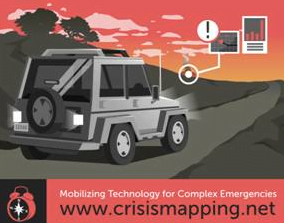Ed note: The report Disaster Relief 2.0: The Future of Information Sharing in Humanitarian Emergencies analyzes how the humanitarian community and the emerging volunteer and technical communities worked together in the aftermath of the 2010 earthquake in Haiti, and recommends ways to improve coordination between these two groups in future emergencies. The UN Office for the Coordination of Humanitarian Affairs (OCHA), together with the United Nations Foundation and Vodafone Foundation Technology Partnership, commissioned the report, which was researched and written by a team at the Harvard Humanitarian Initiative.
The Disaster Relief 2.0 Blog Series provides a public forum for people from both the humanitarian and volunteer and technical communities to discuss ideas in this report and the future of disaster relief.
You can follow conversations about the report on Twitter using the hashtag #DisasterTech and on the UN Foundation’s Facebook page. Readers can submit questions to the report’s authors through those channels; a transcript with answers to select questions will be published on UN Dispatch on April 11, 2011.
Microtasking as a real-time support to relief workers and real-time engagement for communities
By Rob Munro
Relief workers frequently arrive at crisis-affected locations with little prior knowledge of the language, geography or community structures. How can communications be understood? Where are the locations of existing services? Who are the trusted community leaders? Many first-responders have expressed the same dream solution: an ‘artificial intelligence’ device that can translate any language and answer specific queries.
While this sounds like fiction it is not that far away, but it is called ‘artificial artificial intelligence’ or more commonly ‘microtasking’. To a relief worker the device might feel like artificial intelligence, but the digital answers and translations are really performed by scalable workforces collaborating on statistically disassembled and distributed ‘micro-tasks’, and delivered in near-real-time.
But where to find the workforce? If you have been away from home at the time of a tragedy then you understand the desire to immediately help. Simply donating to relief organizations is incomparable to plugging directly into the relief effort, helping your community in real-time. These are the right people to mobilize.
In the wake of the 2010 earthquake in Haiti I managed a microtasking initiative called Mission 4636. 2,000 Kreyol-speakers from 49 countries translated, mapped and categorized 80,000 emergency communications (about the length of 10 novels) in real-time. The majority of relief workers on the ground could not understand a sentence like “Ti ekipman lopital fokal genyen yo paka minm fè 24 è”, but any of our volunteers could immediately translate this to “Fokal Hospital has less than 24 hours of supplies remaining”. Crucially, they also knew that “fokal” was slang for “Fort California”, identified it immediately on an unlabelled map, and knew who to call to verify the information. We took this information processing burden off the relief workers within Haiti and injected the crucial local knowledge where it was needed most.
There are still hurdles to overcome before we make this a larger, sustainable practice (connectivity, workflows, security) but we hope to see microtasking become a mainstream strategy for large scale information processing in relief work. Above all, distributed strategies like microtasking expand the ways in which crisis-affected communities can help themselves – a broader goal of all relief work.
Rob Munro’s history includes working for the UNHCR in Liberia and Energy for Opportunity in Sierra Leone, to Silicon Valley search-engines and start-ups. He currently works as a computational linguist at Stanford University and Global Viral Forecasting, specializing in applying machine-learning and crowdsourcing to processing large volumes of communications in less-resourced languages.
